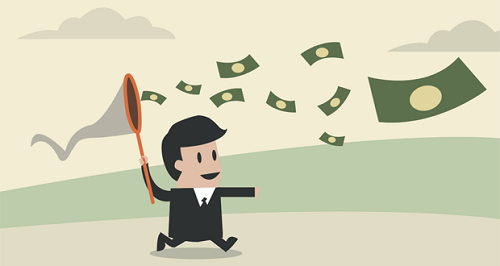
Hotel owners are interested in all facets of your property’s operation and efficiency, but perhaps the most important area—the one that is always top of mind—is profitability and the way it affects property value. As the hospitality world becomes more entrenched in the constantly evolving digital age, maintaining and improving profitability has become increasingly challenging. This is especially true as the cost of customer acquisition has continued to rise.
Twenty years ago, the overall cost of customer acquisition for the typical hotel was in the 5 percent to 10 percent range of guest-paid revenue. Today, that number is typically in the 16 percent to 18 percent range, with some properties shelling out as much as 40 percent of guest-paid revenue as acquisition cost before the guest even steps in the door. And, at a minimum, most hotels are paying at least three times what they were paying historically for customer acquisition. In other words, the increased operating expenses caused by consumers increasingly embracing higher-cost digital channels has had a detrimental effect on the bottom line of hotels and, therefore, on asset value.
To help shed some light on just how dramatic the effect on asset values has been, let’s look at the revenue capture performance of U.S. hotels. Revenue capture is the percentage of revenue available after all the costs associated with acquiring the customer are subtracted from the amount the guest paid for the reservation. Those acquisition costs can broadly be put into two buckets. First, the costs and fees directly associated with the transaction, such as commissions, transaction fees, loyalty costs, and net-rate markup. Second are sales and marketing expenses that cannot be assigned directly to a specific transaction, but are expenditures made to acquire the customer regardless of the method of booking. Revenue capture is typically presented as a percentage of guest-paid revenue.
The graph above highlights the U.S. lodging industry’s revenue capture figures for the 12 months ending in June of 2016 versus the prior 12 months. During that one year period, revenue capture declined from 84.4 percent to 83.9 percent. In terms of incremental revenue that would drop to the bottom line, this decline represents $729 million that U.S. hotels could have retained had their collective revenue capture percentage remained constant.
If that money was just reflected as profit, asset values would have been increased substantially. Using an 8 percent cap rate, this decline in revenue capture reflects a $9 billion erosion in asset values, with each 0.1 percent decline in revenue capture worth about $1.8B in value.
Another way to highlight the effect of revenue capture on hotel asset value is to look at how U.S. hotels were affected by the decline in this measure over the last year. Net room revenue represents the revenue that remains after all customer acquisition costs are removed.
As shown in the “Guest-paid vs. Net Revenue” graph on page 32, guest-paid revenue increased 4.6 percent in 2016 to $146.9 billion. However, net revenue only increased 4 percent to $123.3 billion, meaning that during that period, hotels paid $23.6 billion dollars to acquire the customer, a $1.7 billion increase over the prior year. So, of the additional $6.5 billion guests spent buying hotel rooms in the 12 months ending in June of 2016, over 26 percent of that spend went to simply acquiring customers.
Hotels can work to reverse this trend by optimizing their business mix to drive direct consumers through more cost-effective channels, thereby creating a healthier profit and asset value proposition. Even small shifts in channel optimization can result in huge rewards as an overwhelming percentage of the cost savings drop directly to the bottom line.
The table to the right shows the actual dollar amount spent over the 12 months ending June 2016 compared to the prior 12 months for the three major components that comprise the total cost of customer acquisition: Non-P&L transaction costs; P&L transaction costs; and sales and marketing. P&L transaction costs are the costs associated with a hotel booking and paid directly by the hotel—think retail commissions, channel costs, or loyalty fees. Non-P&L transaction costs occur when a consumer pays a third party for a hotel room and the hotel receives a portion of that room revenue from the third party, but the portion kept by the wholesaler or OTA is not recognized on the hotel P&L as a commission cost.
There were year-over-year increases in all three customer acquisition categories that were about equally split between transaction costs and sales and marketing. These metrics should be something that every owner, GM, and asset manager should be constantly focused on to best manage revenue and flow through to the bottom line.


Service Hotline
Work Time:Mon-Fri 9:00-18:00
UTC+8

Sinoexpo Digital Platform
Copyright 2006-2025 Shanghai Sinoexpo Informa Markets International Exhibition Co., Ltd. All rights reserved
沪ICP备05034851号-77
 沪公网安备 31010402000543号
沪公网安备 31010402000543号